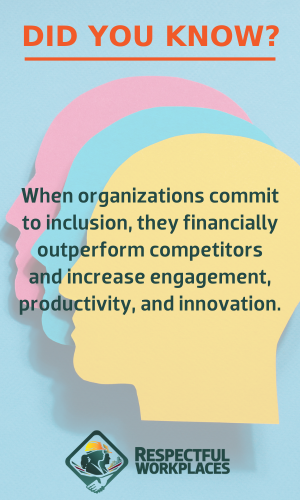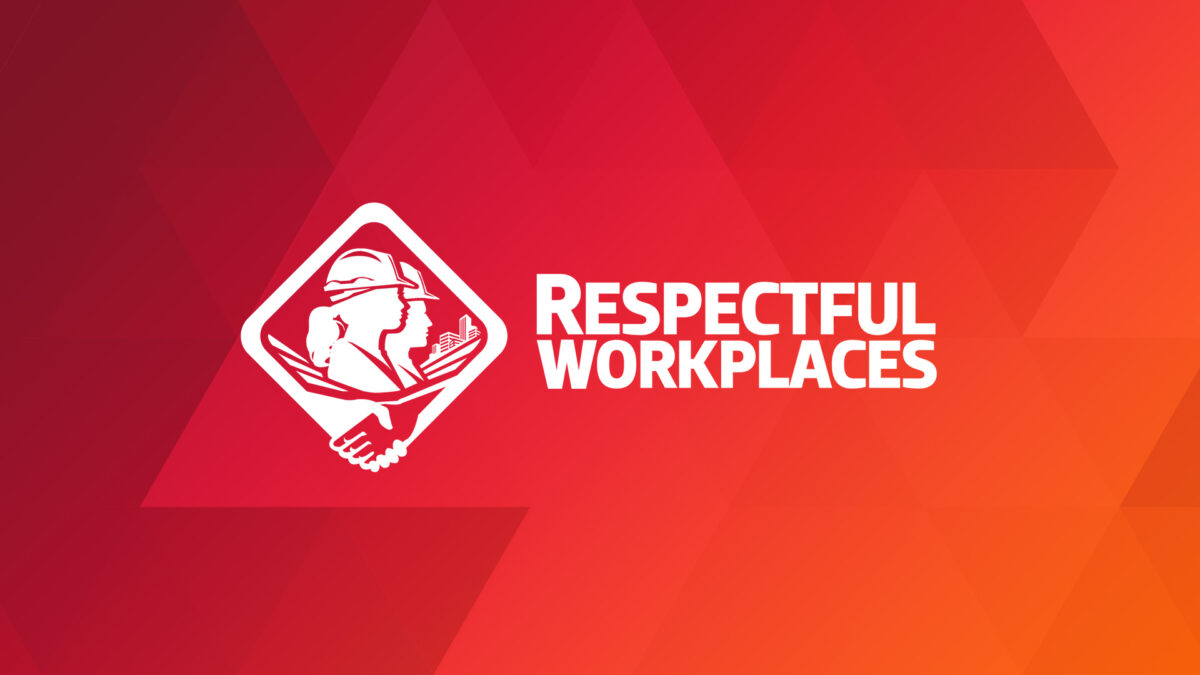Take time to reflect on how your organization prioritizes equity, diversity, and inclusion

The last quarter of the calendar year is a great time for businesses to not only evaluate productivity and profitability, but also re-examine their commitments toward equity, diversity, and inclusion. It’s a good time to take a critical look at the progress made during the first nine months of the year, and the gaps that can be closed.
Drawing from detailed insights provided in earlier segments of the Building a Foundation of Respect blog, this feature identifies three aspects for industry leaders to focus on.
1. Set tangible goals and report on progress
A leading reason why many organizations fail to achieve their inclusion goals is that few are measuring their progress. In a study of Canadian employers, 79.6% said that inclusion, equity, and human rights are considered a strategic priority within their organizations. However, only 18.8% reported that they measure the impact, efficacy, or return on investment of their inclusion initiatives. (Read more in Part 55).
Measuring progress toward a more inclusive organization may require new approaches to gathering information and understanding the connection between inclusion and the well-being and profitability of an organization. However, the effort is well worth it. Research shows that when organizations commit to inclusion, they financially outperform competitors and increase engagement, productivity, and innovation.
It’s not enough to have policies; they must be lived every day. Collecting data, analyzing patterns, and transparently sharing progress (or the lack of it) ensures a system of continuous feedback and improvement.
2. Examine hiring policies to ensure inclusivity and question whether bias is impacting your recruitment and retention
In a world increasingly aware of unconscious biases, the recruitment process is the frontline of showcasing commitment to equity, diversity, and inclusion. Bias in the processes of recruitment and retention can have a cumulative impact on the career opportunities of Black, Indigenous, and People of Colour.
Bias becomes systemic when it influences not just one decision, but a series of decisions. Bias embedded in formal and informal processes of recruitment, retention, and advancement has the most impact on an organization’s ability to develop a pipeline of talented, diverse people. Both Part 53 and Part 54 look at how hiring practices can often inadvertently sideline deserving candidates due to bias, and lack of inclusion in all levels of decision making.
Understanding how bias may be influencing the employment life cycle will help to create a more inclusive organization. To reduce systemic bias, it is not sufficient to simply train people on unconscious bias, or for leaders to announce plans and goals. To make system-wide change, people from every job level should be directly involved in the planning and implementation of an inclusion initiative.
Implementing strategies like blind recruitment, setting diverse interview panels, and continuous training of HR teams are essential steps. By ensuring these, companies affirm their dedication to providing equal opportunities to all, and set the foundation for a more diversified workforce.
3. Assess operational performance – is transformational inclusion really taking place?
The real effectiveness of an organization’s EDI policy is tested on the ground – on the construction site and in the office – amidst the daily grind. Is there a conscious effort to maintain a culture of mutual respect and understanding? Does allyship truly happen on the ground? Has the organization seen transformational inclusion take shape?
In Part 59, the blog looks closely at transformational inclusion outlining three initial key actions that leaders can take to foster transformational inclusion: 1) make it a personal commitment; 2) be bold in your actions; 3) ask yourself the tough questions.
For EDI policies to have an impact in the heart of day-to-day operations, it takes more than a “business-as-usual” approach; it takes transformational inclusion. However, for this to happen, leadership plays a pivotal role. Leaders must model the behaviour they want to see. They have the power to foster transformational inclusion by addressing their own bias blindspots, creating an environment of trust, and by asking themselves some tough questions.
Conclusion: take time to reflect
Taking this time to reflect and act ensures that as bricks and mortar are placed, a foundation of respect, understanding, and inclusivity is also poured.
By actively promoting EDI, companies do more than just get the job done. They foster environments where every individual can thrive, and the business can outperform.
Let this quarter be a renewed pledge to the cause, and inspire loftier goals for 2024!
Read from the beginning. Click here to start at Part 1.
What can an effective Respectful and Inclusive Workplace Program deliver?
- Become an employer of choice – attract, retain, and advance top talent from all sources of labour
- Unlock collaboration and innovation – create high-performing teams through diversity of thought and experience
- Build your brand – your organization will gain a competitive edge as a leader and innovator
Get started today!
The BuildForce Canada Online Respectful and Inclusive Workplace Toolkit includes:
- the Respectful Workplace Online Self-Assessment Tool to assist organization leadership in assessing their current situation and identifying where they may need to make changes
- the Respectful Workplace Policy Framework and Implementation Guide to assist organizations in creating and implementing a policy that supports a respectful and inclusive workplace
- the Respectful Workplace Online Training Course to train workers on how to create and support a respectful and inclusive workplace
- the online course Introduction to Understanding Systemic Racism: A Guide for Leaders and Managers
All the resources you need to create and support a respectful and inclusive workplace!

Respectful and Inclusive Workplaces
